Get PeakVisor App
Sign In
Search by GPS coordinates
- Latitude
- ° ' ''
- Longitude
- ° ' ''
- Units of Length

Yes
Cancel
Share ×

Scan the QR code and open PeakVisor on your phone
❤ Wishlist ×
Choose
Delete
The Garden Route National Park comprises lush forests, pristine beaches, and dramatic coastal cliffs, all hugging the scenic shores of South Africa’s southern coastline. This natural paradise holds 70 named mountains, the highest and most prominent being Peak Formosa at 1,675 meters (5,495 ft).
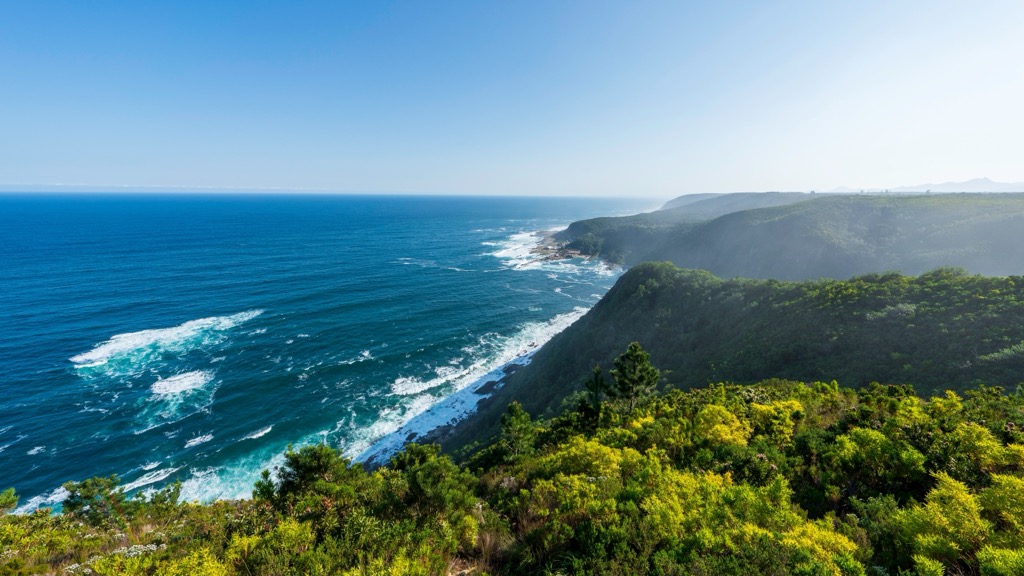
The Garden Route National Park stretches from the Western Cape to the Eastern Cape coastlines in southern South Africa, encompassing 121,000 ha (298,998 ac) of land. Within the park’s boundaries are three distinct areas: the Wilderness, Knysna, and Tsitsikamma Sections.
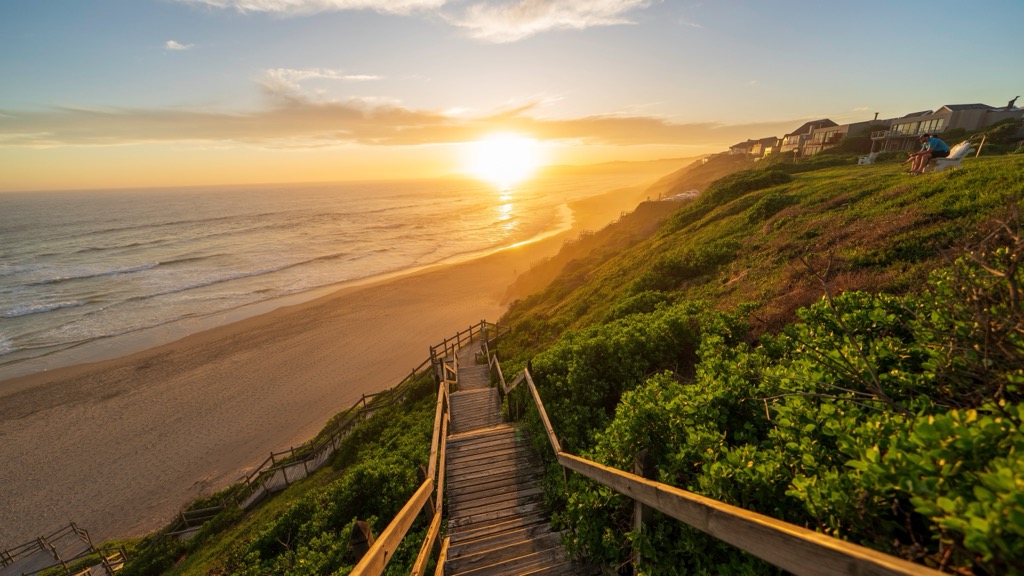
Beach lovers will flock to Wilderness Beach, boasting Blue Flag status. Beaches must comply with specific criteria relating to water quality, information provision, environmental education, safety, and environmental management to be granted Blue Flag status. This westernmost section of the park also encompasses five lakes, rivers, and the Touw Estuary. The Wilderness Lakes area is a haven for birdwatchers and activities like kayaking and boating.
Heading east, the coastal town of Knysna boasts stunning natural beauty and is most notable for the Knysna Heads. These two sandstone cliffs stretch high above the Knysna Lagoon, surrounded by thriving forests. This area is home to a diverse range of species, including the endangered Knysna seahorse.

Further east along the coastline lies the Tsitsikamma Section, known for ancient forests, gorges, and the Storms River Mouth. Hikers traverse the suspension bridge and wander along scenic trails winding through the lush vegetation and providing panoramic coastline views.
While the park’s highest peak lies in the easternmost Tsitsikamma, other prominent peaks, such as Goedgegund, Stormberg, and Spitskop, are scattered around the different sections. The park is home to many rolling mountains, and its flourishing vegetating cover belongs to the biodiverse Cape Floral Region.

Notable and endemic plant species of the Fynbos ecoregion thrive in this area, home to a Mediterranean maritime climate of mild, rainy winters and warm, dry summers. With summer highs of 77°F (25°C), winter lows of 50°F (10°C), and a yearly rainfall exceeding 1,000 mm (39 in), conditions support the growth of Afromontane temperate forests and fynbos.
The mountains of Garden Route National Park are situated within the broader Cape Fold Mountain range that stretches across much of the Western Cape. These mountains were formed through the tectonic collision of the African and Antarctic plates tens of millions of years ago, folding and uplifting the Earth's crust.
One of the dominant rock strata of the Cape Fold Mountains is the Table Mountain Sandstone. This formation is recognizable by its distinctive reddish-brown color and is prevalent along the rocky coastal cliffs and the rugged terrain of the interior.
Karst formations are shaped by the dissolution of soluble rocks like limestone and dolomite. This process leads to the formation of features such as caves, sinkholes, and underground drainage systems. Karst formations exist throughout the park, particularly in the Knysna Section.
The continuous battering of the ocean waves has shaped these rocky cliffs as they extend toward the coastline. Erosion and sediment deposition have sculpted coastal bluffs into dramatic features like sea caves, arches, and stacks.
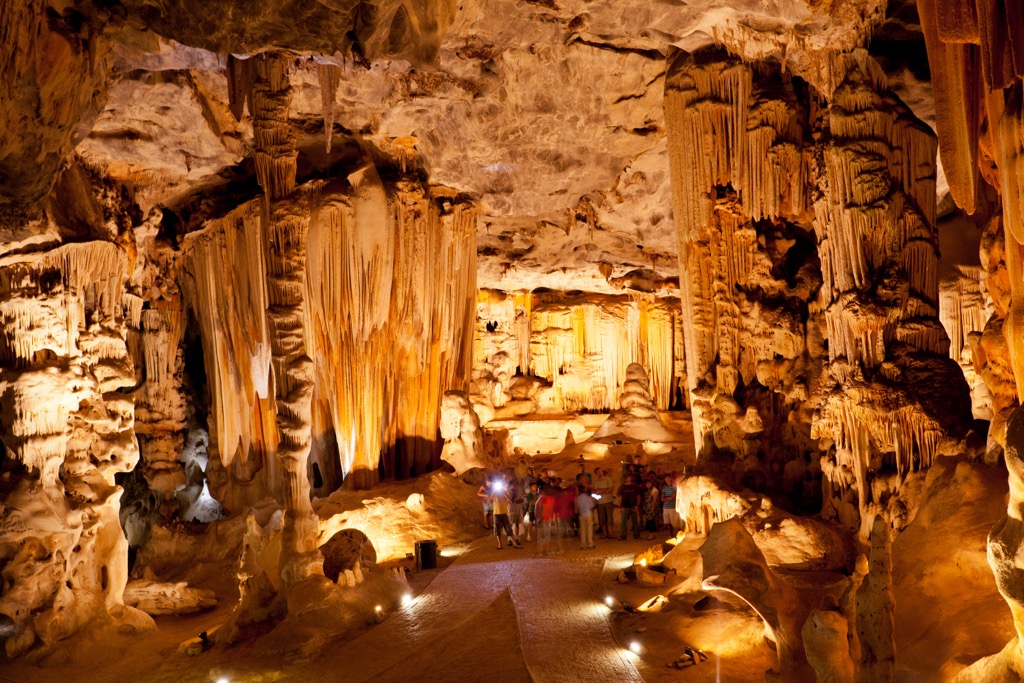
The primary ecology of the Garden Route National Park is Afromontane forest and Fynbos.
One of the world’s foremost biodiversity hotspots is the Fynbos ecoregion, which translates as ‘fine bush,’ an intricate mix of shrubs, grasses, and flowering plants. The Fynbos ecoregion is specific to South Africa, particularly the Western Cape. A prominent species in the park is the 2-meter (6.5 ft) tall Erica canaliculata that displays charming pink flowers.
Afromontane forests are home to the majestic Outeniqua yellowwood, towering at an impressive 60 meters (197 ft), making it South Africa’s tallest tree.
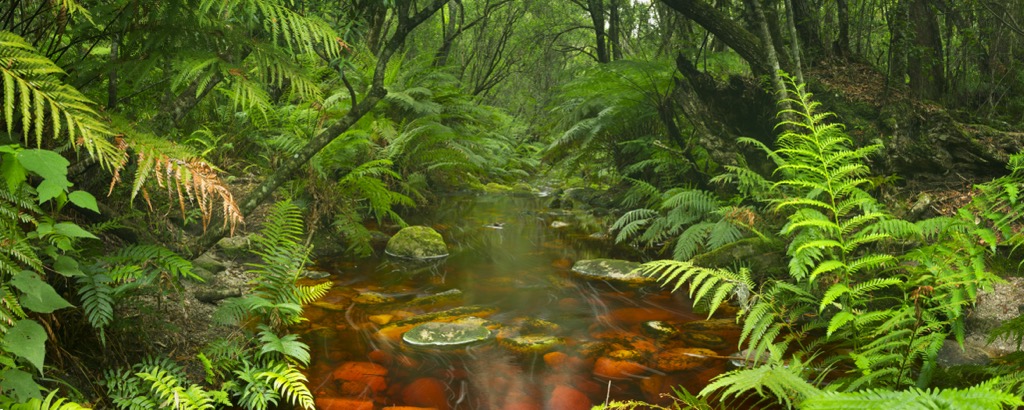
The lush forests and flourishing vegetation provide an ideal environment for 85 wildlife species. Among these, African elephants are the primary mammals in the park, alongside bushbuck, blue duikers, and vervet monkies. Birdlife is rampant in the park’s leafy understory, with 371 species recorded. The oceans provide habitat for 15 whale and dolphin species, as well as Cape clawless otters and southern elephant seals.
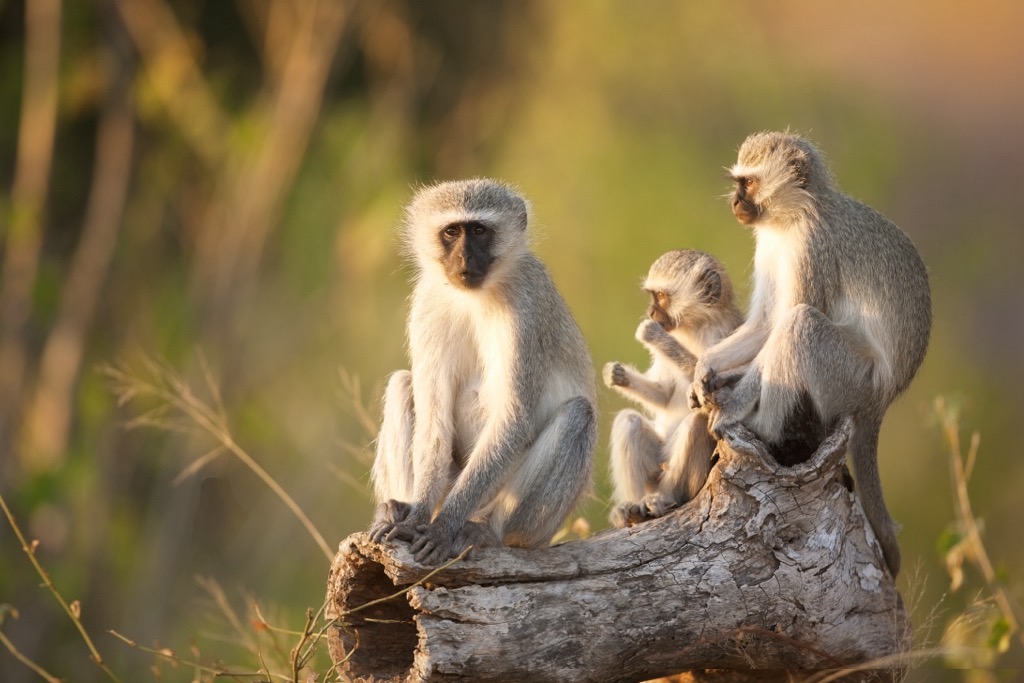
The history of Garden Route National Park begins with the indigenous peoples who have lived in the area for millions of years. Most of the history of humanity consists of the stories of prehistoric bushmen who evolved on this continent. However, the most recent indigenous peoples are the San and Khoikhoi, whose roots stretch back millennia, long before recorded history.
The San people arrived in this area an estimated 200,000 years ago, while the Khoikhoi arrived around 1,500 to 2,000 B.C. Upon the arrival of European settlers in the 17th century, the introduction of smallpox devastated San and Khoikhoi communities.
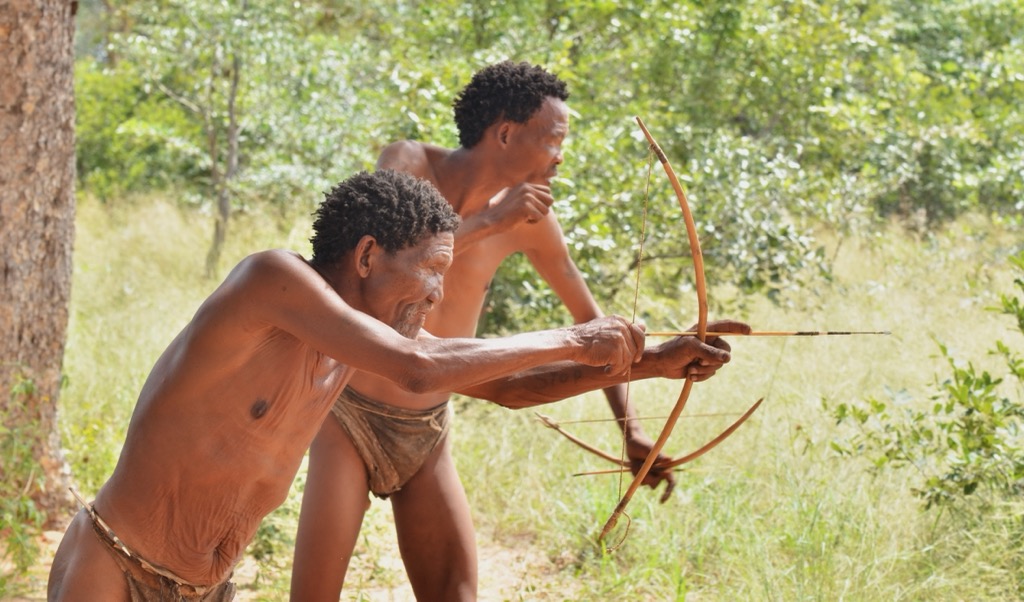
As European settlers established coastal communities, they sought economic gain in ventures such as hunting, particularly for ivory sourced from elephants. The hunters ventured into the forests as these settlements expanded, extracting hardwood timber.
In 1964, the Tsitsikamma National Forest was officially established, and subsequently, in 1985, the Wilderness and Knysna National Lake Area Parks were designated. Over two decades later, the Garden Route National Park unified the Tsitsikamma National Forest with the Wilderness and Knysna National Lake Area Parks.
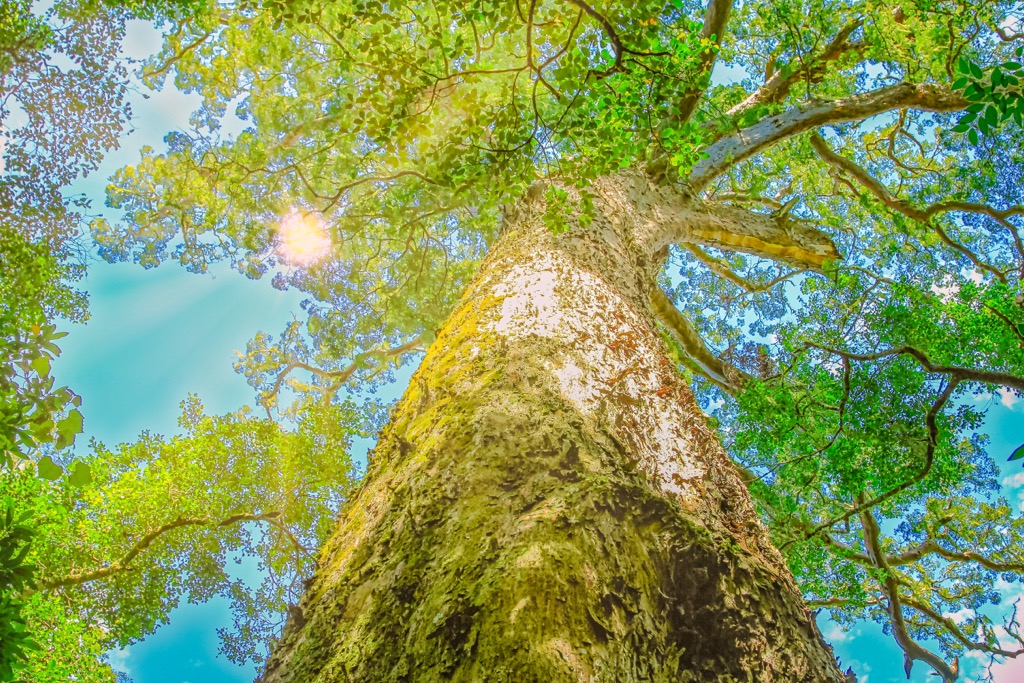
Explore these hiking trails and areas in the Garden Route National Park:
Located along the picturesque coastline of South Africa, the Otter Trail traverses 43 km (27 mi) through dense forests, rugged cliffs, glorious sandy beaches, and rocky outcrops. The Otter Trail is revered as one of the world’s most scenic and challenging hiking trails and is a bucket list item for experienced hikers.
Breathtaking vistas, natural flora, and diverse wildlife adorn this coastal five-day route. From the starting point at Storms River Mouth, you’ll cross the suspension bridge into Tsitsikamma Forest, thriving with ancient trees and indigenous plant species. The route then meanders down the coast, crossing beautiful waterfalls like the multi-tiered Tsitsikamma Falls.
The second day of trekking involves scaling and descending steep quartz outcrops and crossing the waist-high Kleinbosh River. A similar journey awaits the next day as you climb and gently descend the rocky coastline and cross the wide Elandbos and Lottering rivers, passing untouched and delightfully secluded beaches. These swimming sessions provide reward and motivation to continue onward.
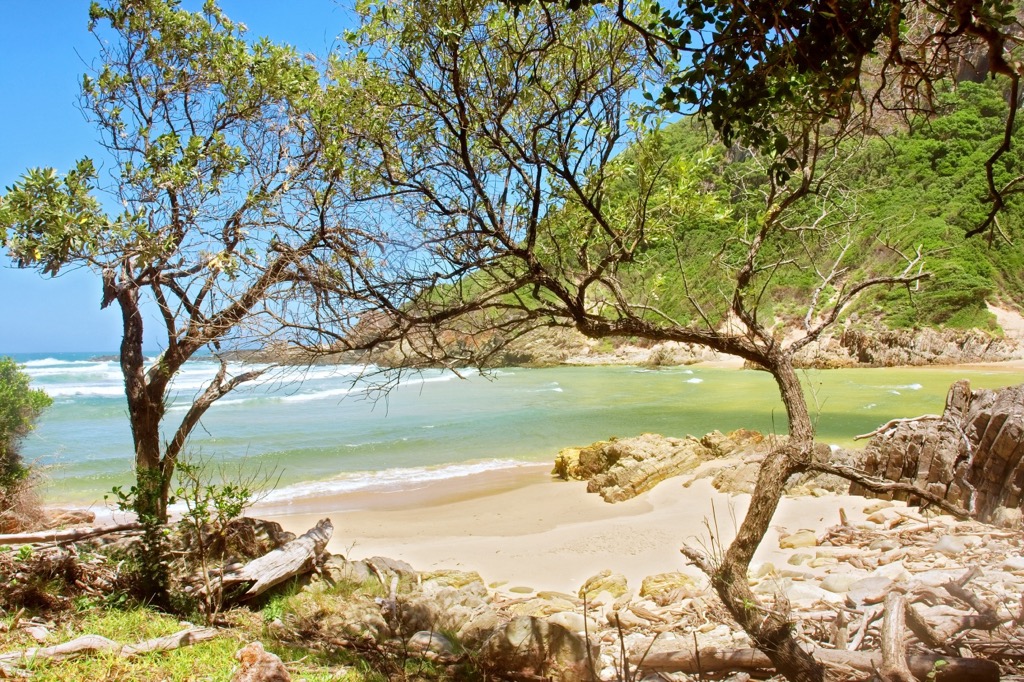
The longest and most strenuous section of trail encompasses landscapes ranging from humid Afromontane forests to sublime coastlines teeming with rock pools, anemones, colorful fish, and rugged ridgelines showcasing dazzling Fynbos. You may spot an octopus lurking in the tidal pools with some luck and a keen eye. Prepare for a final river crossing across the fierce Bloukrans River.
The final day of the hike leads you to one of the trail’s highest points, from where you’ll reflect on the previous days’ trekking and take in the stunning coastal views. Descend the coastal hills through misty forests before arriving at Nature’s Valley, the trail’s end.
The Dolphin Trail is a 17 km (10.5 mi) two-day guided hike across diverse ecosystems, landscapes, and seascapes with abundant marine life. Named after the frequent sightings of bottlenose dolphins along the seashore, the Dolphin Trail also treats you to whale-watching at certain times of the year, particularly during the southern right whale's winter migration.
Like the Otter Trail, you’ll commence this coastal walk at Storms River Mouth, brimming with tidal pools, caves, and rock formations. From here, you’ll enter the emerald Tsitstikamma Forest and scale cliffs laced with flowering Fynbos. Watch for birdlife, marine wildlife, and unique plant species endemic to South Africa’s southern coastline.
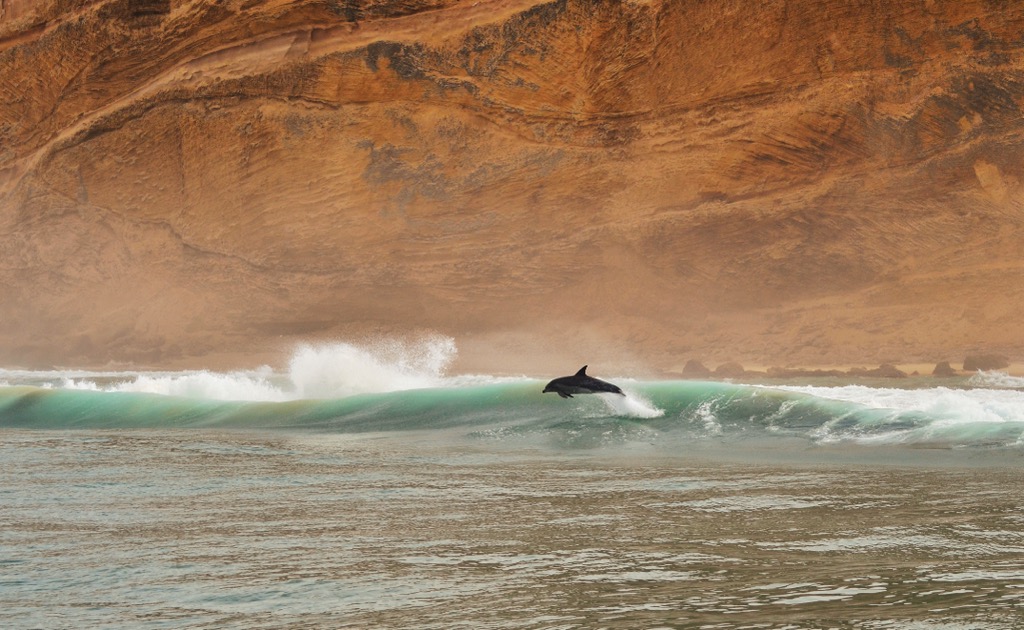
As you progress to the trail’s end at the Fernery, you’ll cross coastal forests, open landscapes, and sandy bays. The ecosystems of this region feature seals, dolphins, Cape clawless otters, and the sea-mollusk-eating birds of the Knysna turaco and African black oystercatcher.
Situated in the Wilderness Section of the Garden Route National Park, the Woodville Big Tree Circular Walk offers a perfect blend of natural wonder, tranquility, and exploration for hikers of all ages.
The short 2 km (1.2 mi) hike into the park’s natural forest leads you to the trail’s namesake, the Woodville Big Tree, a towering Outeniqua yellowwood. This monarch stands at a colossal 31 meters (108 ft) in height with a circumference of 12 meters (39 ft).
The forest is replete with various tree species, ferns, and mosses that create a magical atmosphere. The vibrantly colored Knysna turaco is one of the feathered inhabitants amongst the dense vegetation, which serves as a paradise for birdwatchers.

The Harkerville Coastal Hiking Trail is nestled between the coastal towns of Knysna and Plettenberg Bay and spans approximately 19 km (12 mi). Hikers typically take two days to complete the route. The hike is reserved solely for experienced hikers and adventurous souls, so expect soaring heights, steep rock walls with safety chains, and narrow cliffside paths.
The highlights of this trail are the views overlooking the Indian Ocean and walking along several uncrowded and pristine beaches. Take a refreshing swim or snorkel in the warm ocean waters of Solar Beach or Sanctuary Beach. The intertidal zones offer a chance to witness some of the unique marine environments of coastal South Africa.

The Cape Fold Mountains feature the Outeniqua Trail, a lush 108 km (67 mi) path through indigenous woodlands. You can walk the entire route or embark on a series of day hikes at various points. While some sections involve steep ascents and descents, the Outeniqua Trail suits hikers with reasonable fitness levels and hiking experience.
The Elephant Trail is in the Knysna Section and features three separate walks to accommodate hikers of differing fitness levels. These circular paths start and end at the Diepwalle Forest, home to the Big Tree, as well as thriving yellowwoods, stinkwoods, ferns, and bubbling streams.
If you prefer a gentle trail, the 8 km (5 mi) White Elephant Trail is ideal for beginners or those seeking a stroll. For a moderate journey, the 9 km (5.5 mi) Black Elephant Trail offers a longer route and the addition of rock pools where you may find an endangered Knysna seahorse. The more strenuous 7 km (4.3 mi) Red Elephant Trail traces the forest hills of this Afromontane jungle.
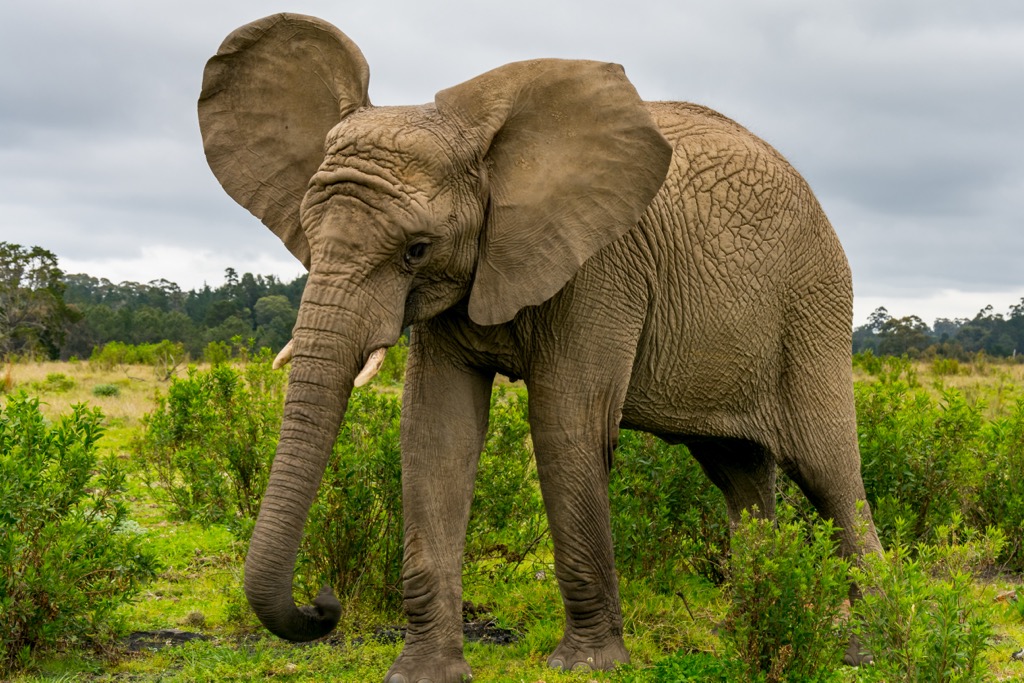
Knysna is a scenic and charming town along the Garden Route National Park renowned for its serene lagoons, the Indian Ocean coastline, and vibrant arts and culture scene. Taking its name from the Khoikhoi word for place of wood reflects Knysna's timber and woodworking center heritage.
The Knysna Heads, two giant sandstone headlands framing the narrow channel connecting the ocean to the Knysna Lagoon, are worth a visit. To explore the Knysna Lagoon, hop on a boat, or wait for a sunset cruise for twilight views.
Throughout the year, the Knysna Waterfront hosts events and festivals, adding an extra layer of excitement to the area's atmosphere. If you're a seafood aficionado, consider visiting during the annual Knysna Oyster Festival. This event celebrates the town's famous oysters and offers a range of culinary experiences, sports events, and entertainment.
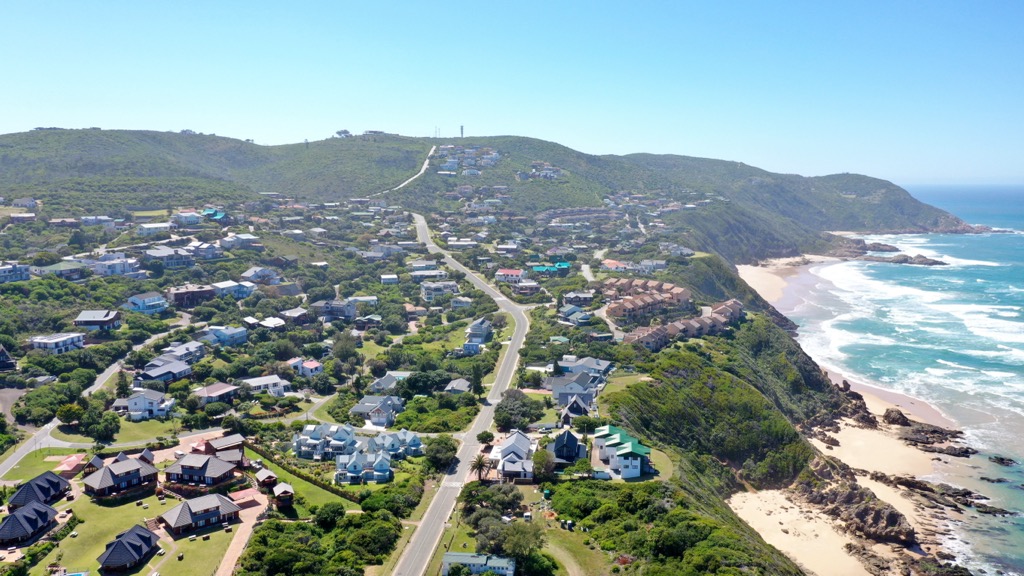
Wedged between the Outeniqua Mountains in the north and the Indian Ocean in the south, George is a picturesque town with many natural attractions, including forests, mountains, rivers, and beaches. Those who love to hike, beach, and enjoy a round of golf will fall for George’s relaxing beauty.
Victoria Bay is a coastal gem approximately 3 km (2.8 mi) from George and features a small beach nestled between cliffs. The bay’s sheltered nature creates calm waters, making it an ideal spot for swimming, snorkeling, and sunbathing. If you’re a surfer, ride Victoria Bay’s renowned right-hand point break for consistent waves and large swells.
The Garden Route Botanical Garden, a 12-ha (29 ac) botanical garden serving as a living museum. The garden highlights the unique plant species, ecosystems, and natural beauty characteristic of this part of the Western Cape.
Golfing enthusiasts will be delighted in the so-called golf capital of South Africa. Numerous world-class golf courses allow you to spend your days courses like Fancourt, Oubaai Golf Club, and Kingswood Golf Estate. If you find yourself at Fancourt, treat yourself to the luxury spa to enjoy a range of rejuvenating treatments in a tranquil and verdant setting.
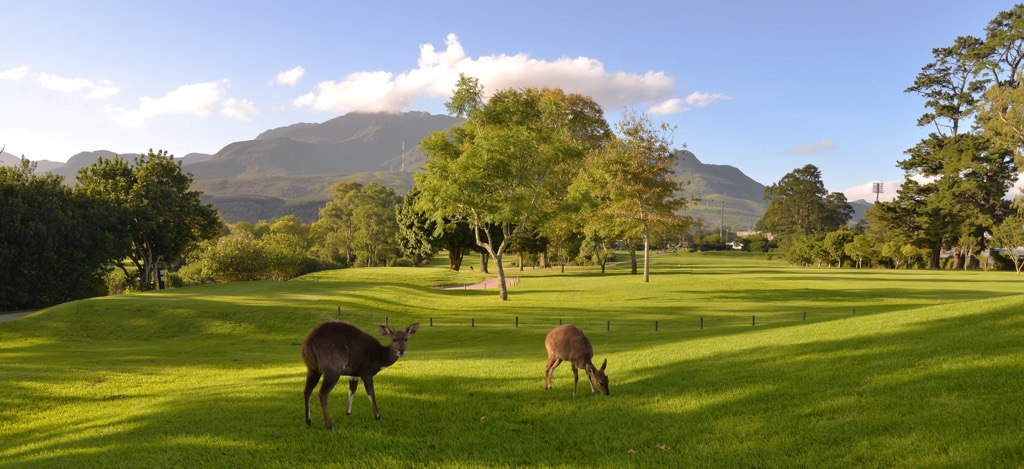
Although the most optimal approach for accessing the Garden Route National Park involves self-directed travel via a rental vehicle, alternative transportation choices exist for reaching the park. Consider embarking on the Bazbus service, which offers routes from cities such as Cape Town, George, Port Elizabeth, Durban, and Johannesburg, among many others. This option connects you to all three Garden Route National Park sections, and is based around a circuit of hostels. If you're arriving from afar, Cape Town International Airport, situated 450 km (280 mi) distant, serves as the closest international air travel hub.
Explore Garden Route National Park with the PeakVisor 3D Map and identify its summits.








